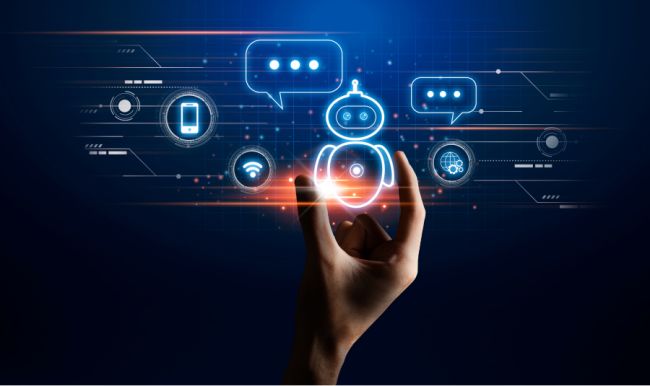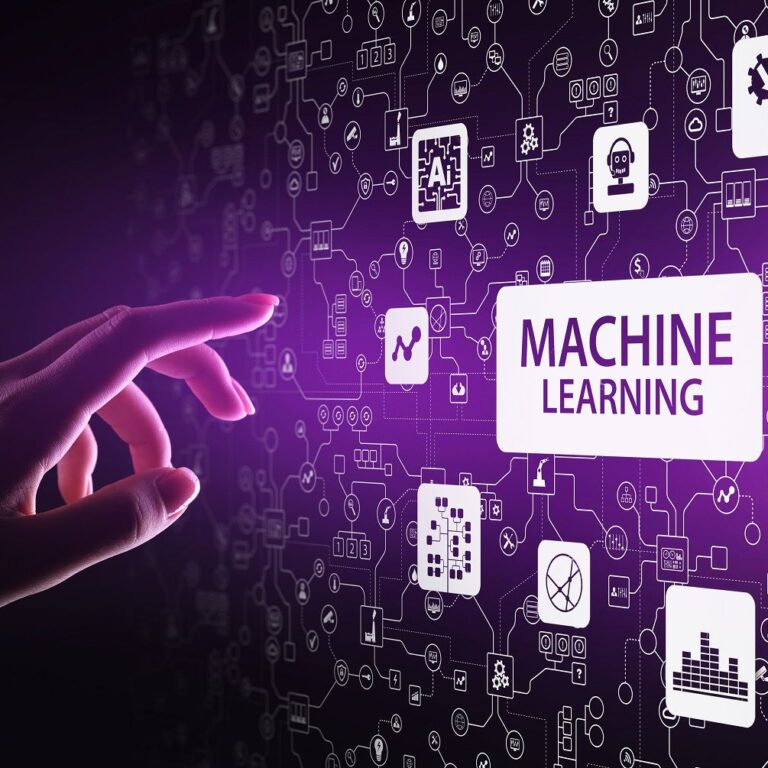
Deep learning is a branch of AI inspired by the brain. It uses layered artificial neural networks to learn from vast amounts of data. This allows it to excel at recognizing complex patterns in images, speech, and language. Think of it as mimicking the human brain’s ability to learn and improve with exposure.
How does Deep Learning work ?
Here’s a breakdown of how it works, diving deeper than the basic building blocks:
The Biological Inspiration: The Human Brain
Our brains are learning machines, packed with billions of interconnected neurons that fire and communicate. These connections strengthen with repeated use, allowing us to learn and improve over time. Deep learning tries to replicate this by using artificial neural networks.
Building Blocks: Artificial Neural Networks
- Neurons: Deep learning uses artificial neurons, mathematical functions that mimic how biological neurons process information. Each neuron receives weighted inputs from other neurons, performs a simple calculation, and outputs a signal.
- Activation Functions: These functions add a non-linearity to the network. Imagine a light switch – an on/off signal. Activation functions introduce a middle ground, allowing the network to learn more complex patterns. Common functions include ReLU (Rectified Linear Unit) and sigmoid functions.
- Layers: Artificial neural networks are organized into layers. The first layer receives raw data (images, text, etc.), and subsequent layers progressively transform and refine the information. This layered structure, with more layers signifying “deeper” learning, allows the network to extract increasingly intricate features.
The Learning Process: Training the Network
- Data Preparation: Deep learning thrives on massive amounts of labeled data. Images need labels describing their content (e.g., “cat,” “dog”), text needs labels for sentiment (positive, negative), or translation needs paired examples of source and target languages. Data cleaning and pre-processing are crucial for optimal learning.
- Forward Pass: Data is fed into the first layer of the network. Each neuron applies its activation function to the weighted sum of its inputs. This process continues through all layers until a final output is produced (e.g., image classification, text translation).
- Error Calculation: The network’s output is compared to the desired outcome (the label in the training data). The difference between the predicted and actual value is calculated as the error.
- Backpropagation: This is the magic behind learning. The error is propagated backward through the network, layer by layer. The weights of the connections are adjusted proportionally to their contribution to the error. Weights of connections that led to incorrect outputs are decreased, while those that contributed to a good prediction are strengthened. Imagine sculpting a path through a maze by reinforcing correct turns and weakening wrong ones.
- Optimization Algorithm: Various optimization algorithms like gradient descent guide the weight adjustments during backpropagation. These algorithms help the network converge towards a solution with minimal error.
- Iteration and Refinement: Steps 2-5 are repeated numerous times, iteratively refining the weights and improving the network’s ability to recognize patterns in the data. This process, called training, can take a significant amount of time and computational power depending on the network’s complexity and the size of the data.
Difference Between Artificial Intelligence(AI), Machine Learning(ML), Deep Learning(DL)
Artificial Intelligence (AI):
Imagine AI as the grand vision. It’s the broadest concept, encompassing the entire field of creating intelligent machines capable of mimicking human cognitive abilities. These abilities can include learning, problem-solving, decision-making, and even creativity. AI doesn’t specify how this intelligence is achieved, but it’s the ultimate goal – machines that can think and act like humans.
Machine Learning (ML):
This is a subfield of AI that focuses on the specific method of achieving intelligence: learning from data. Machine learning algorithms don’t need to be explicitly programmed with every step. Instead, they can analyze large amounts of data, identify patterns, and improve their performance over time. This allows them to tackle various tasks, from recognizing faces in photos to predicting stock market trends.
Deep Learning (DL):
Deep learning is a powerful technique within the machine learning toolbox. It takes inspiration from the structure and function of the human brain. Deep learning uses artificial neural networks, which are complex systems with multiple layers of interconnected nodes. These networks can process large amounts of data, especially complex data like images, speech, and text. Deep learning excels at tasks requiring high pattern recognition, making it a go-to choice for applications like image and speech recognition, natural language processing (machine translation), and even medical diagnoses through image analysis.
Main Uses of Deep Learning:
Unlocking your phone securely:
Forget complex passwords or patterns. Deep learning has made facial recognition a viable and secure way to unlock your smartphone. Deep learning algorithms are trained on massive amounts of facial data to recognize your unique features. When you look at your phone’s camera, the deep learning model analyzes your face and compares it to the stored data. If there’s a match, your phone unlocks seamlessly. This technology offers both convenience and security, as it’s much harder to replicate a face compared to guessing a password.
Personalized recommendations, everywhere:
Deep learning is the engine behind the “recommended for you” sections on many online platforms. From shopping websites suggesting clothes you might like to streaming services recommending movies you’d enjoy, deep learning personalizes your online experience. These recommender systems work by analyzing your past behavior, such as purchases, browsing history, or what you’ve watched in the past. By identifying patterns in your data, the deep learning model can predict what you might be interested in and suggest relevant items. This not only saves you time searching but also exposes you to new products or content you might discover on your own.
Smarter search results:
Deep learning isn’t just about fancy features – it’s also making search engines more intelligent. When you type a query into a search engine, deep learning algorithms go beyond simple keyword matching. They analyze the context of your search, your past search history, and even your location to deliver the most relevant results. This ensures you find what you’re looking for quickly and efficiently, avoiding irrelevant or outdated information.
Filtering out the noise: Spam and Security:
Deep learning plays a crucial role in keeping your inbox clean and your online transactions secure. Spam filters powered by deep learning can analyze incoming emails, identify patterns associated with spam messages, and filter them out before they reach your inbox. This helps protect you from phishing attempts and unwanted marketing emails. Similarly, deep learning can be used in security systems to analyze financial transactions and detect suspicious activity that might indicate fraud. By identifying patterns that deviate from your normal spending habits, deep learning can help prevent unauthorized charges and protect your financial information.
Voice assistants that (almost) understand you:
Virtual assistants like Siri and Alexa have become ubiquitous in our homes. Deep learning is the secret sauce behind their ability to recognize your voice commands and respond in a natural way. Deep learning models are trained on massive amounts of speech data, allowing them to understand different accents, pronunciations, and even background noise. While they might not be perfect yet, deep learning is constantly improving the accuracy and natural language processing capabilities of virtual assistants, making them a valuable tool for hands-free interaction with your devices and smart home systems.






